The fragile beauty of the pines is easily accessible, often at the end of a local road that begins paved and well-traveled. My first foray was to visit the memorial to pilot Emilio Carranza, which I wrote about here. That’s the perfect introduction; you et a glimpse of some relatively unknown history, and if you desire to travel further, the ruins of a cranberry bog town are a scant mile away. The road begins easy enough, before the pavement begins to fade into washboard gravel and hard-packed white sand, like a graham cracker in milk. If you take it easy, any car will make it. But from there, you’re on your own.
Google Maps doesn’t differentiate between century-old dirt roads with names like Blue Anchor and Mount Misery, and ones maintained by the state. Potholes as wide as the road appear suddenly, filled with milky green soup, their depth unknown. Cell service fizzles out like in a horror movie. The fine white sugar sand and the tall pines—some scorched with the scars of wild or prescribed burns—seem to absorb sound, and make you feel like you’re in the middle of nowhere, even if you left the state highway a few minutes ago. Then you come across the ruin of a charcoal furnace, a trashed dune buggy, or a historic sign declaring this lumpy mound in the woods the location of a tavern and carriage stop dating to the 1700’s. Or you come upon the towering remains of a paper mill, standing like an ancient Roman wall:
Welcome to the Pines, a million acres of natural area largely preserved through benign neglect.
The Pine Barrens were mostly forgotten by those outside the region until John McPhee wrote about the area and residents in a series of 1967 articles for the New Yorker. Before then, the “Pineys” were dismissed and ridiculed as backward, inbred, and mentally deficient, thanks to a fabricated study by psychologist Henry H. Goddard. The Kallikak Family, which used the effects of malnutrition and fetal alcohol syndrome to promote his belief that criminality and immorality were hereditary, was but one document by American eugenicists, who influenced Teddy Roosevelt and also infamously inspired the Nazis. All that hangs like a pall when discussing this beautiful and still neglected natural area, which has been scoured for resources since the first colonists came. Even the famous blue holes that I love to photograph are mostly unnatural, created by mining for sand and gravel in the limestone bedrock. The Pines fed the country’s hunger for bog iron and charcoal fuel until railroads replaced the canals, and made Pennsylvania anthracite easier to transport.
The most famous of the bog iron towns is Batsto, preserved today as a living museum:
Another was Speedwell, not far from the Carranza Memorial, which went through a lifecycle that included all the Pines’ greatest hits: bog iron town, charcoal furnace, cranberry farm, and now agriculture. The remains of the furnace are on private land, but the road from Speedwell to Friendship has other attractions, which I learned about in Barbara Solem-Stull’s excellent guide, Ghost Towns and Other Quirky Places in the New Jersey Pine Barrens. I met Barbara at Lines on the Pines, a yearly festival at Stockton university, that celebrates the arts, writing, crafts, history, and culture of the Pine Barrens. Her book has been a great resource, giving directions to easily overlooked landmarks, and warnings about the road conditions. I followed her guide to the former site of the Eagle Tavern, founded by Gideon Pharo in 1799, and a tiny cemetery along the way. The sign for it reads, mysteriously, “A wandering priest made this hallowed ground for all time. Graves marked by heavy pine slabs. Only stone inscribed, Charles Wills 1839.”
The Pines still provide cranberries and blueberries in abundance. Ocean Spray is headquartered here. Other cranberry bog towns have disappeared into the wilderness. The Pines and the swamps therein take back what’s theirs, and many explorers make a hobby of locating stone boundary markers and old roads to mark their existence before they are swallowed up for good. Friendship was one such town, and nearby Sandy Ridge. If you keep traveling south from the Carranza Memorial, you’ll come to a bridge and a crossroads that marks the abandoned town of Friendship. Make a left, and the rutty road will take you to Speedwell, and side roads to Eagle, with the cemetery and unremarkable tavern site. But if you keep going south, there’s another memorial, a huge slab of granite to mark the spot where the Alloway family planted its first blueberry patch. It looks like a giant tombstone, and the road to it is full of deep trail-wide potholes that I had to measure with a hiking pole before driving through. There’s something ominous about this stone fit for a giant’s grave, standing alone in the woods.
You can take this road all the way to Harrisville, but I got tired of having to get out and measure puddles every hundred feet, so I turned back and took the Friendship-Speedwell road back to the highway, down through Chatsworth, the “capital of the Pines,” and past the Harrisville Dam. Pull off the road here at the inauspicious campground sign, and you’ll find the ruins of Harrisville, a paper mill town split in half by the state highway.
The side by the campground hides the ruins well, and for good reason. It is dangerous, and vandalized. It is completely fenced in, put you can see the graffiti and treacherous ground through it. The photo at the top of the article is of the remaining wall of the paper mill. If you are inclined you can find the old main street and cellar holes of the buildings workers lived in. The ruins are old enough that those large trees grew in the middle:
Across the road is Martha, a furnace town named after the owner’s wife. Aw, that’s sweet. There’s not much there. The furnace was buried, and archaeologists rediscovered it, took measurements and photos, and then buried it again, to “avoid vandalism.” Okay, that’s one way. The furnace was right on the Batona trail, a popular hiking path through the pines, so perhaps it needed special protection. Other furnaces like Weymouth have been made into parks. This is a photo of Weymouth Furnace, which is easily accessible from a local highway.
But there’s still things to see in Martha. I’ll be back to follow the Batona toward the lost town of Calico, where the furnace workers lived, and possibly look for “Ogden Nash’s cabin,” which Piney lore says was where the poet penned some of his work. Barbara Solem-Stull says there’s no evidence, but I’ve been known to trek many miles to see an abandoned house in the woods. There’s also a rickety wooden bridge that is hilariously marked “Limit: 7 tons” with a state sign, that I wouldn’t drive a golf cart over. But there was also this creepy hollow tree with a mouth cut into it.
When I first saw this, I wanted to find an old cathode ray tube television that would fit into the hole and stick it in there, but what I found inside made me rethink my childish prank. The tree is dead, so I added my own initials to the many on the back, and left a small token in the shrine within…
Next trip: On a clear day? Apple Pie hill, the highest spot in the Pine Barrens, with its fire tower. It’s fire season already, so it should be manned, which means they may let me climb up for a fantastic view of both Philadelphia in one direction, and the Atlantic in the other. If it’s cloudy, I’ll probably return to Fries Mill and take Schooner’s road in, and look for the concrete ruins again. Or look for Bear Swamp Hill fire tower and the wreckage of a P105 Thunderbolt that crashed in the ‘70s.
Until then… stay foxy.
🦊




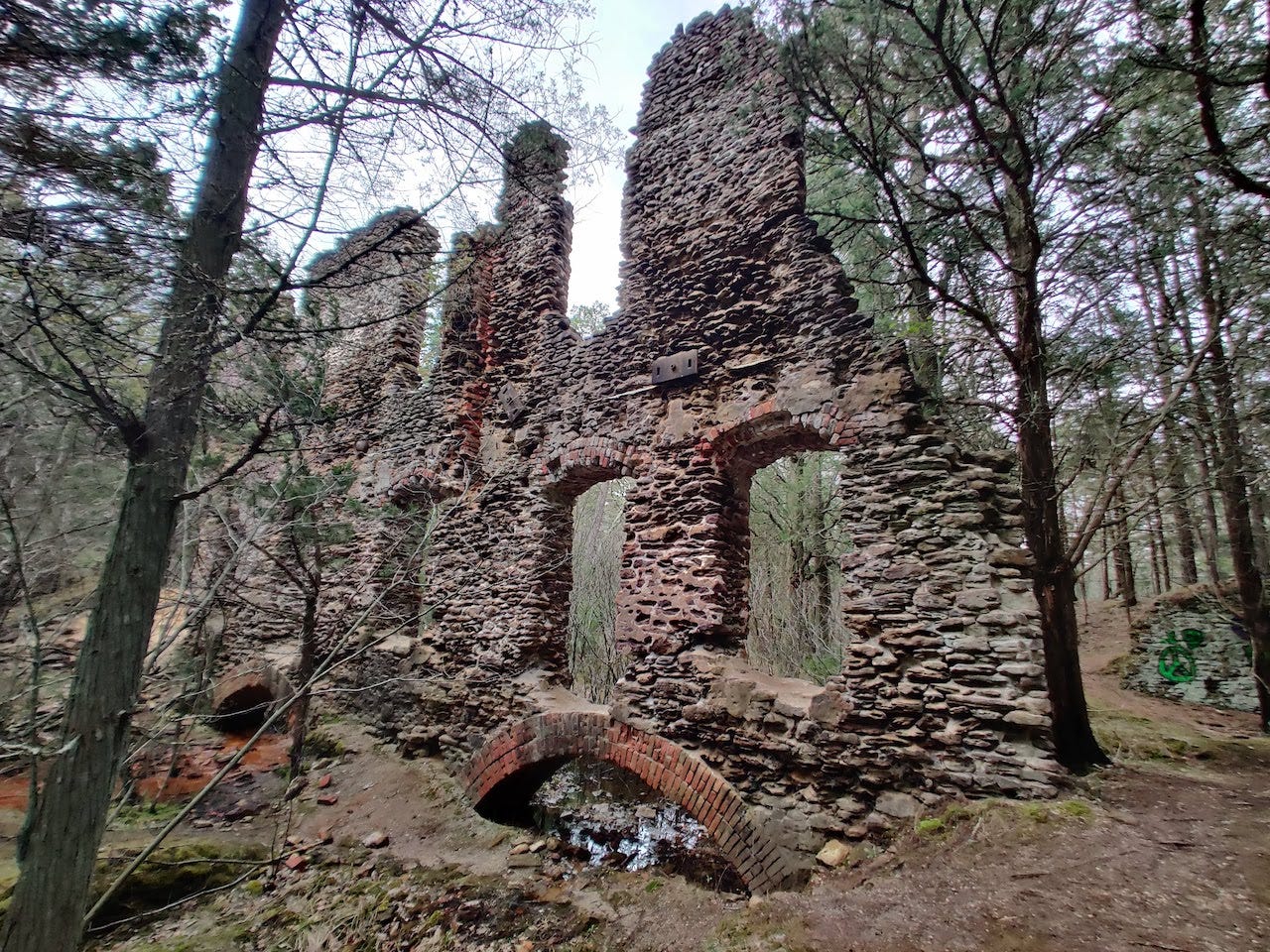
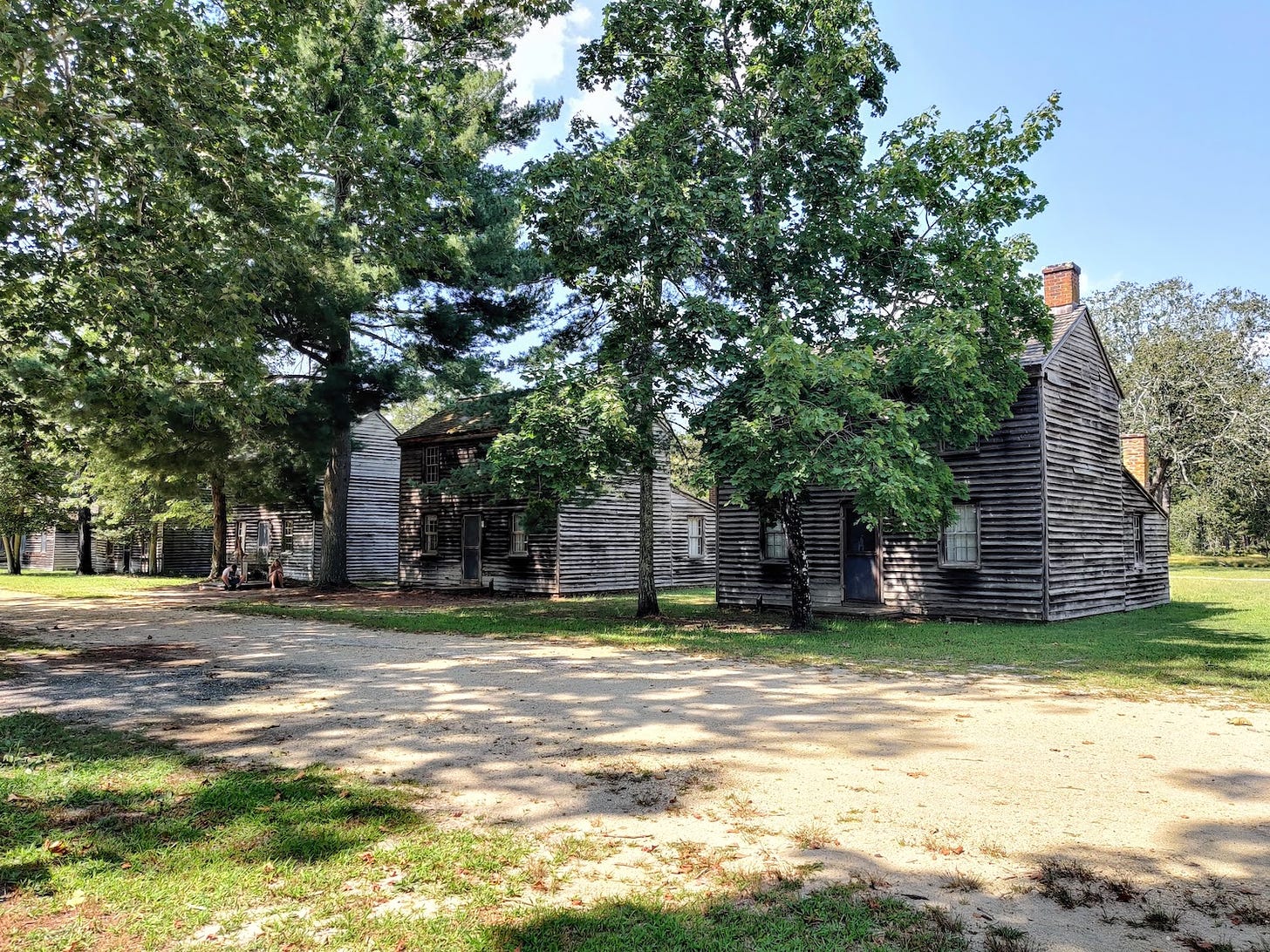
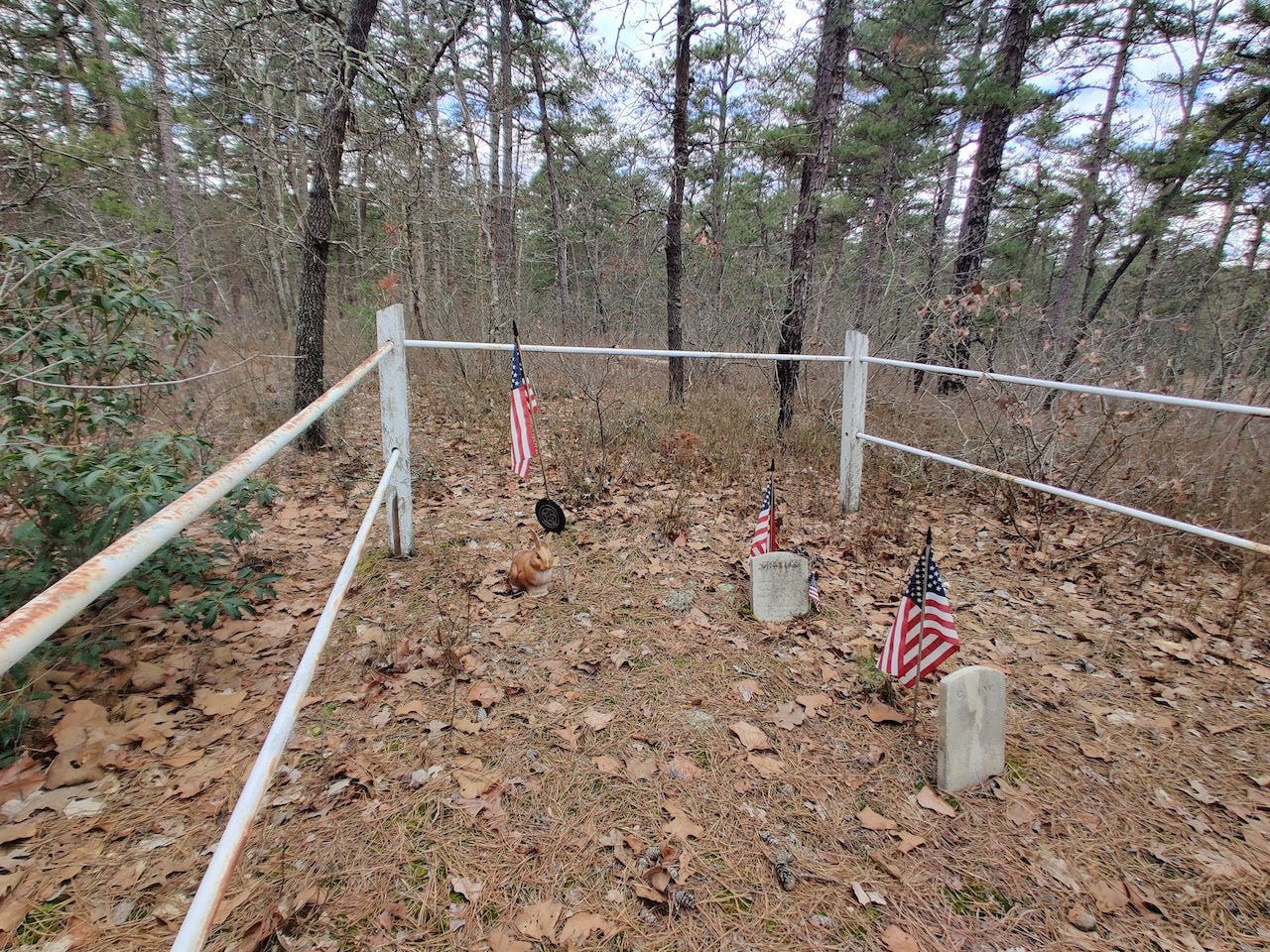
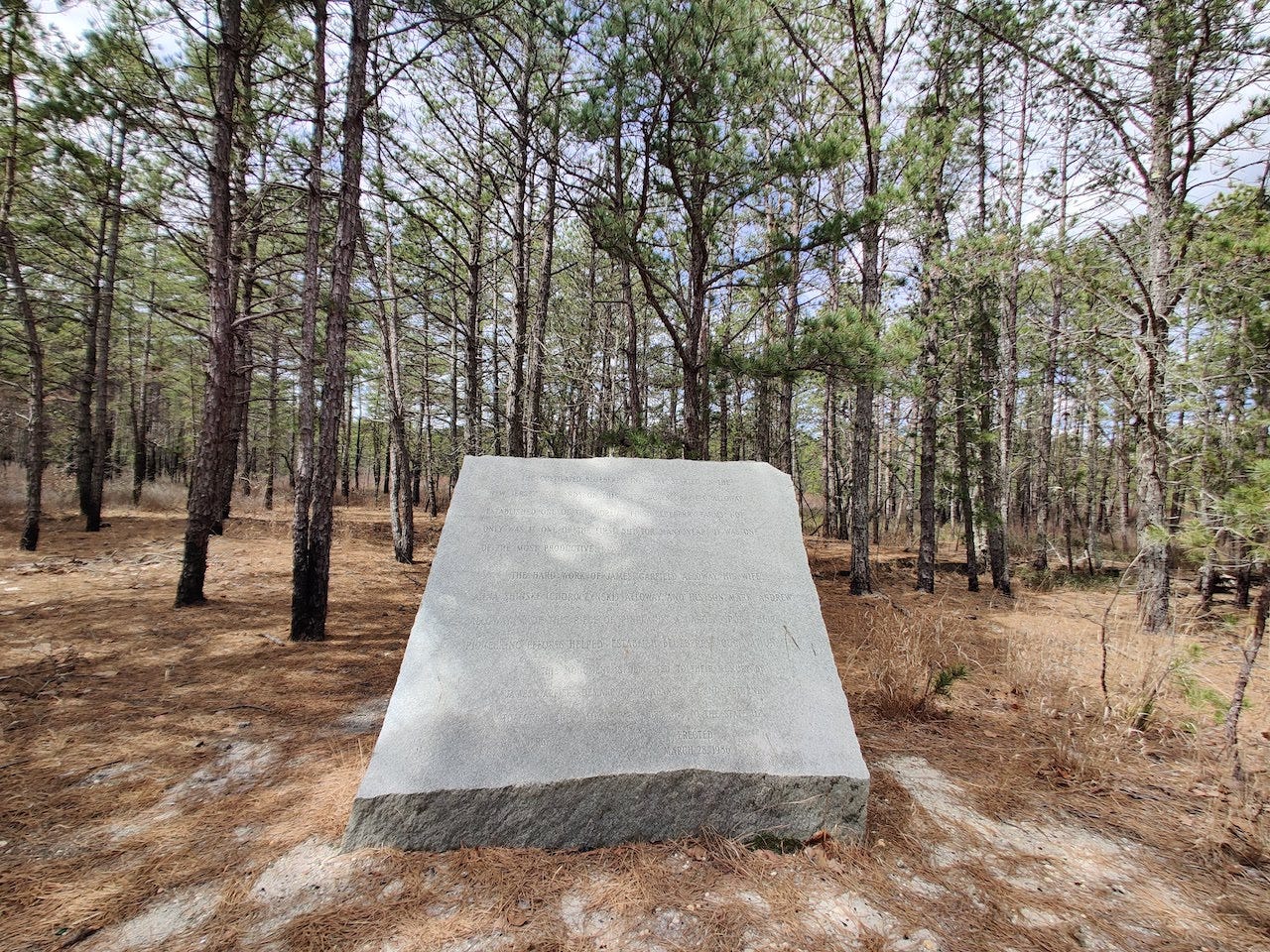
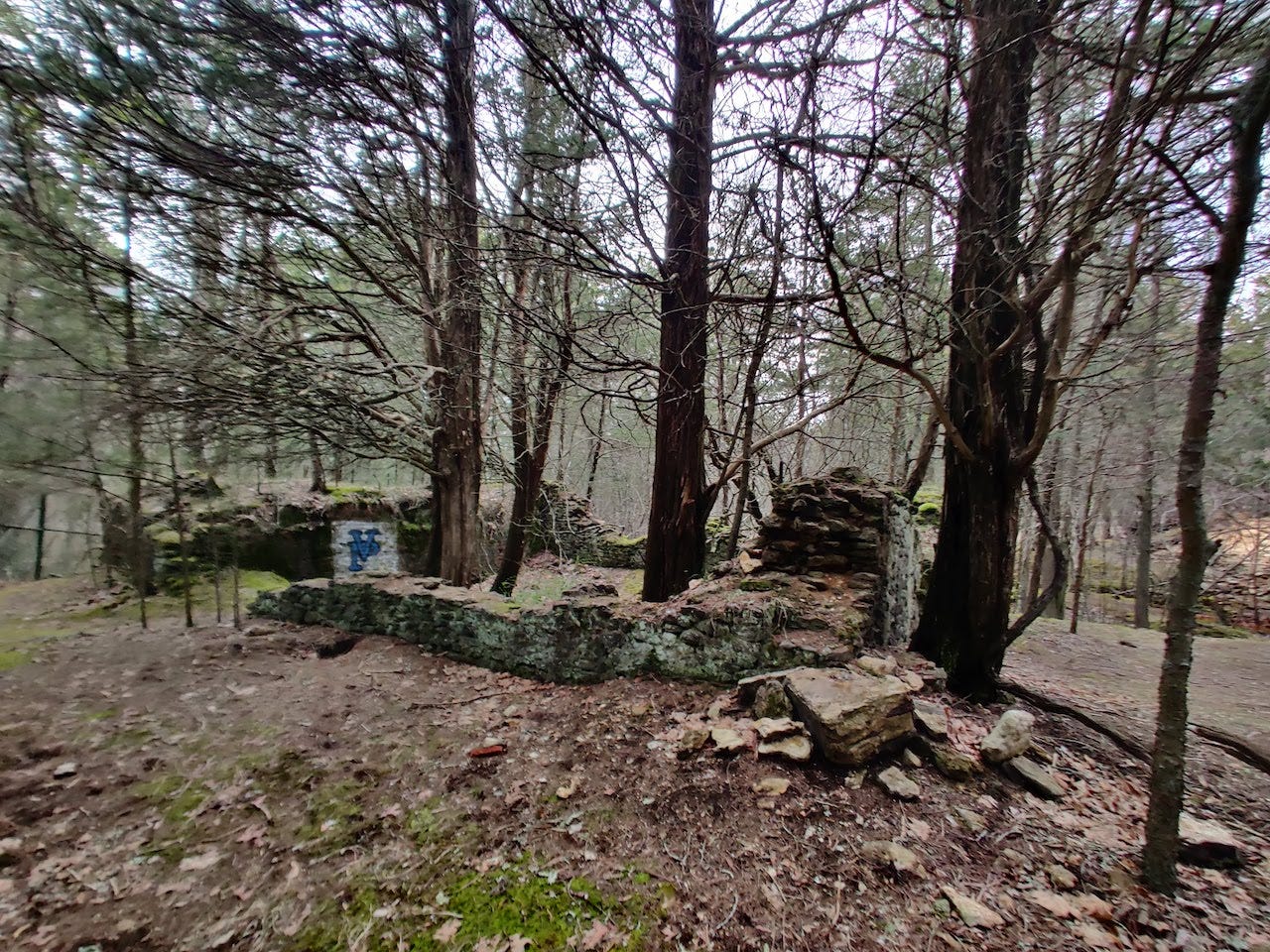
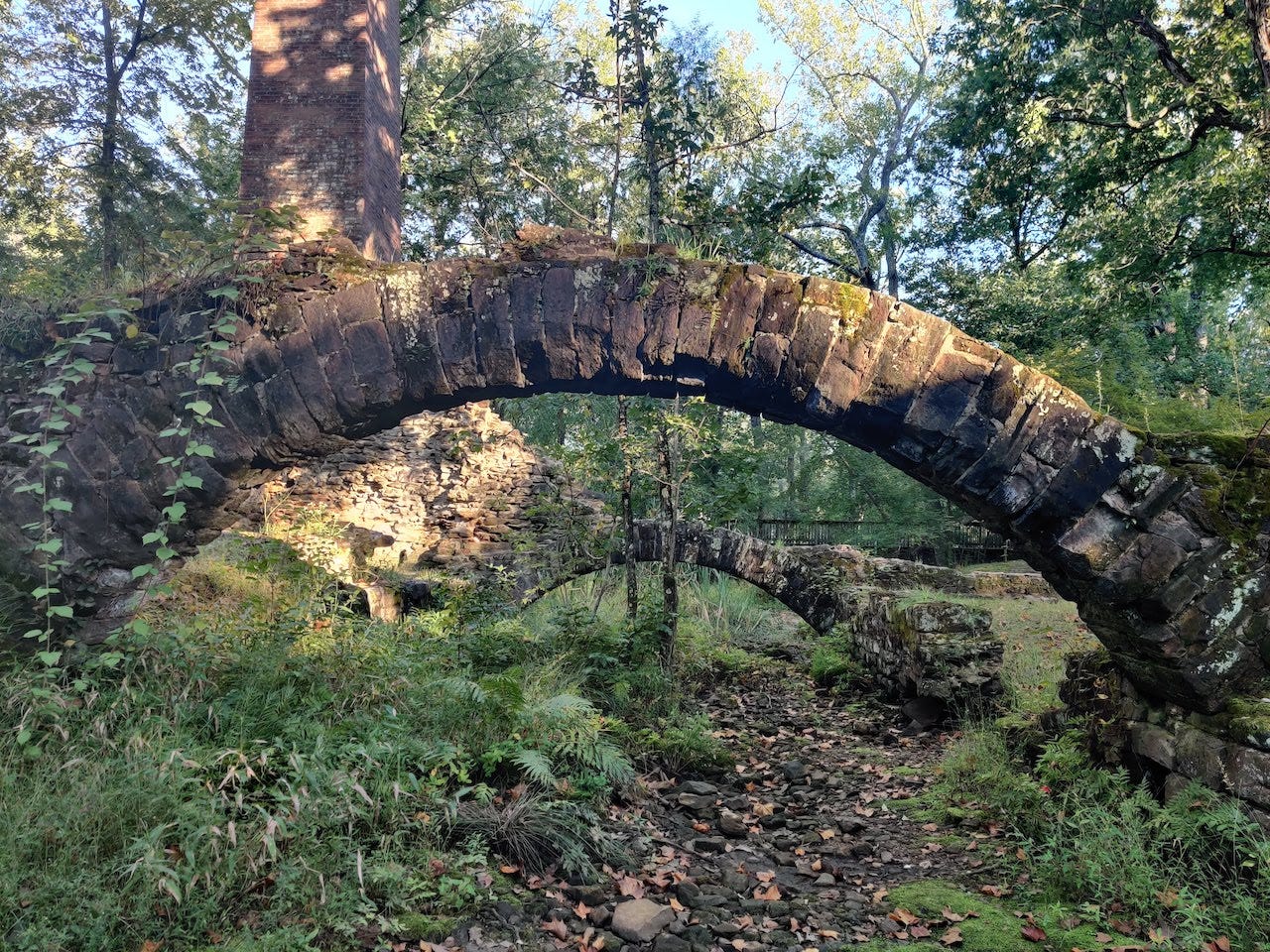
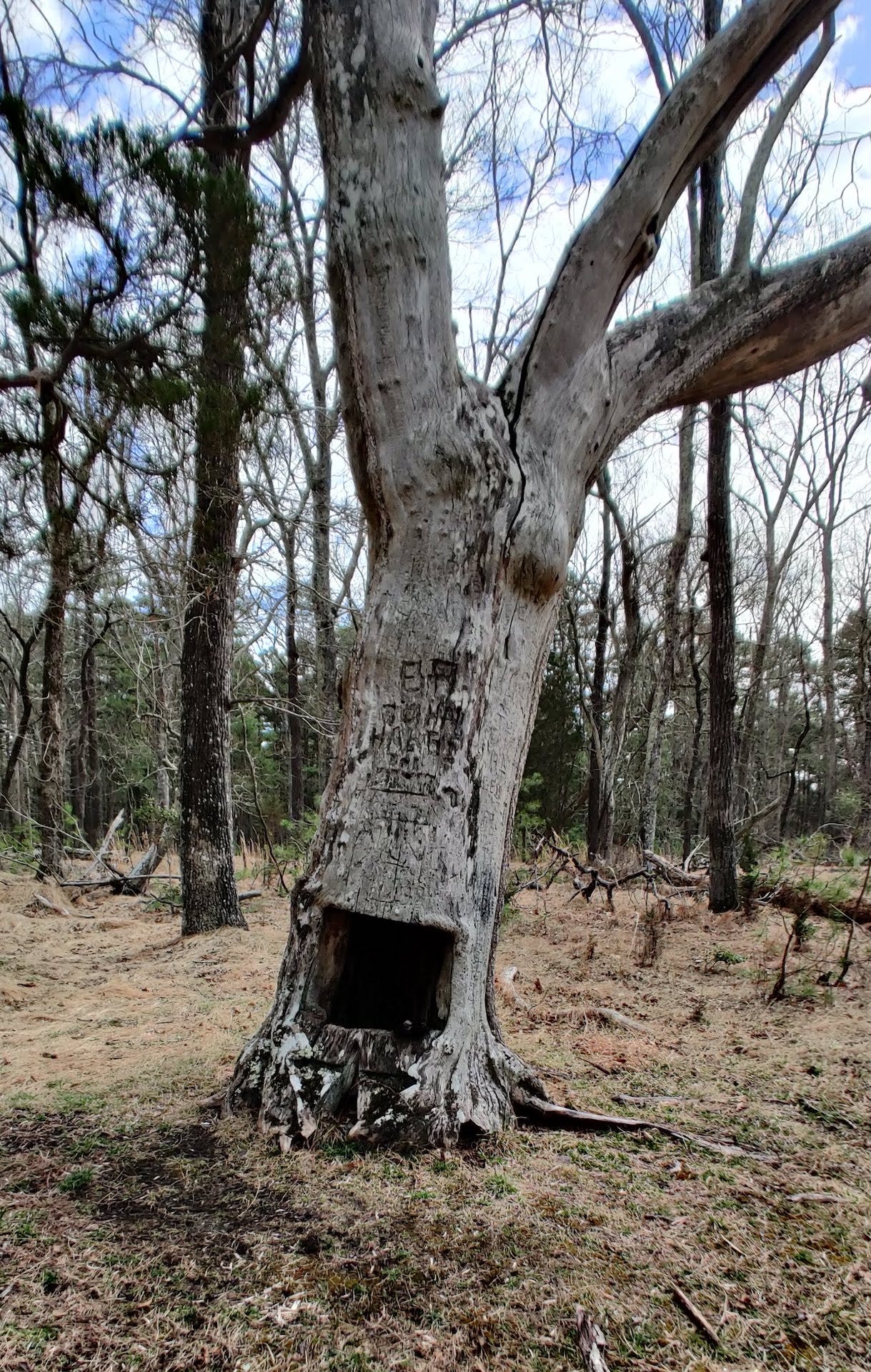
I love stuff like this. It's the kind of thing that I lived for when I used to travel for work all the time.
Odgen Nash wrote many of the animal poems I adored when I was a kid -- I'd walk a long way to catch a just a whiff of his ephemeral cabin too.
What an incredible tree. I am still inching my way through Underland, and one of the conceits is that the author carries with him a tiny model of a casket, given to him by someone who needed to rid himself of his sins. This person wrote down his sins -- all the pain he had caused other people -- burned the paper, and sealed the ashes inside the casket. The author has agreed to hide the casket where it can never be found or re-surfaced. These portals to the underworld really are so tempting, both as metaphors and as real-life places.